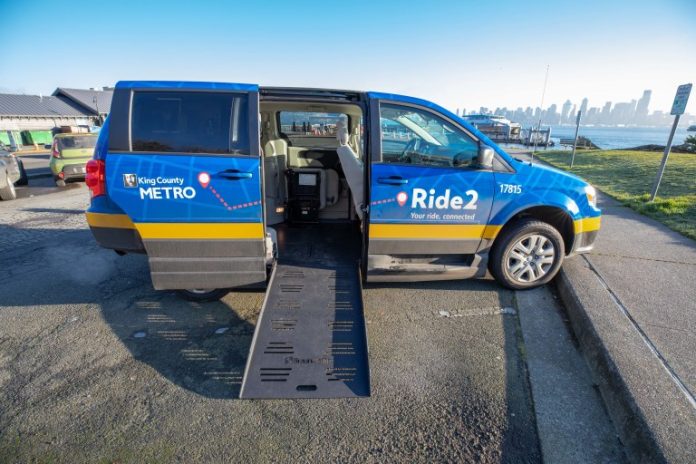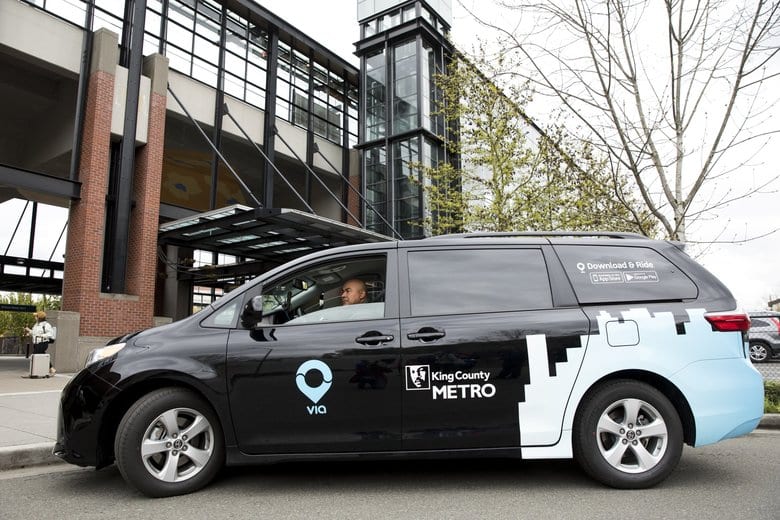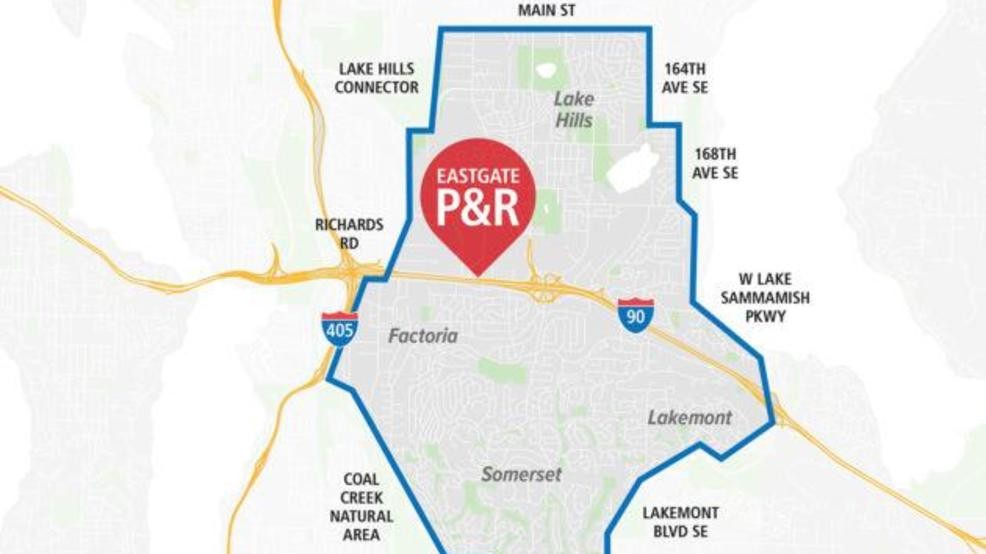
King County Metro has been dabbling in on-demand shuttle services to entice riders to transit centers, but some of those pilot projects are floundering. On Tuesday, Metro announced the worst performers are getting the ax. Ride2, which serves Eastgate and West Seattle, will not be renewed amid low ridership and high costs that hit a staggering $84 per trip in West Seattle.
“If a pilot program is working, we always explore how to make it continue past the pilot period,” Metro Mobility Director Christina O’Claire said in a statement. “Ride2 didn’t meet the performance milestones necessary to continue, but we accomplished what we set out to do in that we heard from our customers on what worked and what didn’t. We’re thankful that the public is willing to try new things, and we’ll apply what we’ve learned with the hopes of approaching these communities in the future with something new-and-improved.”
Ride2 West Seattle was a bit controversial from the start because it used funds from the voter-approved Seattle Transportation Benefit District on what some saw as a luxury service and relied on non-unionized operators–unlike Metro’s buses. The shuttle provides service between Alaska Junction and King County Water Taxi dock at Seacrest Park, which offered an escape valve during the Alaskan Way Viaduct Closure in January when West Seattle bore the brunt of the “Seattle Squeeze” before the SR-99 tunnel opened.
Both Ride2 West Seattle and Ride2 Eastgate (which serves the Eastgate Park-and-Ride) will end on December 20th.
Combined, Ride2 Eastgate and Ride2 West Seattle averaged 125 trips per day–29 of those daily trips in West Seattle. “A total of 7,155 users downloaded the Ride2 app used in both service areas, though less than 15% have used the service in the last 30 days,” Metro reported.
West Seattle’s service area included Alki, Fairmont Park, Genesee, High Point, North Admiral, North Delridge, and Riverview and Metro estimated 53,000 residents and 12,000 jobs were located within that service area.
Via to Transit, which serves Link Light rail stations in Southeast Seattle and Tukwila, will continue. By comparison, it has lately been averaging about 240 trips per day in the Rainier Beach service area alone, Metro said, with a total of nearly 1,000 rides per day across Via to Transit’s five service areas.
“The pilots were designed as 12-month research projects to test innovative solutions to immediate transportation needs,” Metro said in its press release. “Eastgate’s immediate need stemmed from the fact that Eastgate Park & Ride–the county’s largest park-and-ride–was often full early in the morning, and is located in an area with limited local bus service and walking and biking infrastructure.”
While subsidizing a service very similar to ridehailing could be framed as innovative, it may be more innovative for Eastgate and West Seattle neighborhoods to get better walking and biking infrastructure and maybe even densify sufficiently to support frequent transit. Metro doesn’t have authority on those fronts, though.

Eastgate’s service area included Factoria, Lake Hills, Lakemont, and Somerset neighborhoods of Bellevue, serving an estimated 44,000 residents and 32,000 jobs.
Ride2 Eastgate’s ridership exceeds that of Ride2 West Seattle, at roughly 82 trips per day, and costs $35 per trip to operate, Metro said. “While more expensive to operate than an average traditional bus trip (an estimated $5.17), the ridership was within expectations,” Metro said, adding it was “unable to secure funding to extend the service past the one-year pilot timeframe” despite efforts to do so.

Metro officially notified its Ride2 operator Hopelink of termination on December 5th and contractually that means that it will continue to fund Hopelunk for 30 days, ending payments on January 4th by my math. Hopelink employs 14 drivers on Ride2 service, and Metro stated “Hopelink is working with affected drivers on transition planning, and Metro is actively engaged in this effort.”
One lesson learned, Metro said, was on-demand shuttle services can effectively feed fixed-route transit service, but that fixed-route transit must be frequent to work as a magnet; rider feedback suggests West Seattle Water Taxi wasn’t frequent enough with its 30-minute frequency.
Even with these pilots, a lasting “first mile, last mile” solution (to get transit riders from their home to transit and back again) remains elusive. A shuttle program that appears successful may just preface the need for a new bus route, unless the demand is truly so scattered that a route cannot be drawn to connect the demand centers.
My own two cents is that much like the private ridehailing industry–which is hemorrhaging money–it’s not clear that there is a sustainable or scalable model here. On-demand shuttle service is simply very expensive, making it hard to provide widely available. That’s why we must add more high-quality transit and design cities around it. Innovative “new mobility” in suburban haunts may always be second-best when it comes to value.
Disclaimer: I did work at King County Metro as a graduate intern and do some low-level work on Ride2.
Doug Trumm is publisher of The Urbanist. An Urbanist writer since 2015, he dreams of pedestrian streets, bus lanes, and a mass-timber building spree to end our housing crisis. He graduated from the Evans School of Public Policy and Governance at the University of Washington in 2019. He lives in Seattle's Fremont neighborhood and loves to explore the city by foot and by bike.

